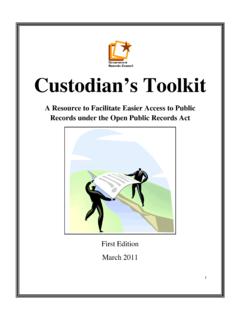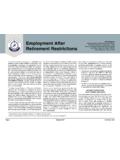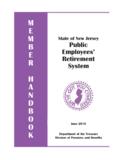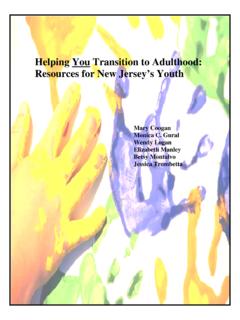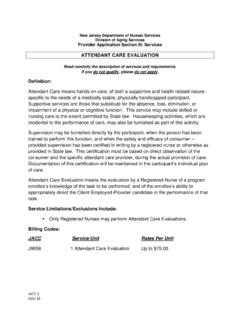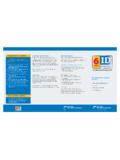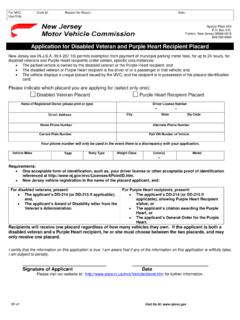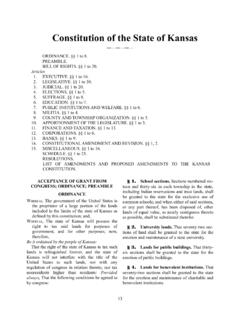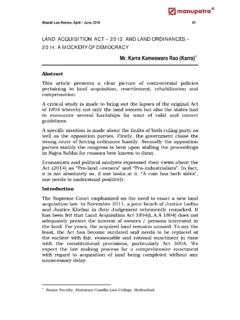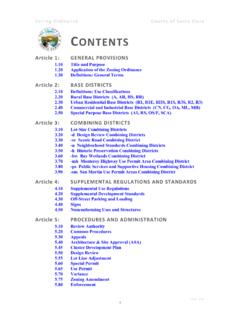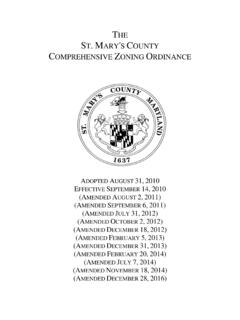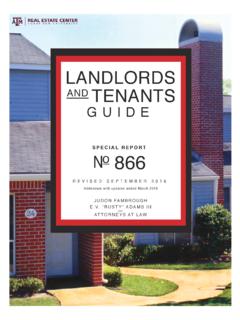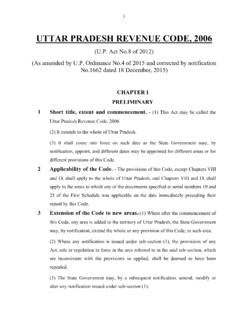Transcription of Based Codes - Government of New Jersey
1 July 2010 FormBasedCodesin New & OpportunitiesAcnowledgementsThis report was written by Carlos Rodrigues PP/AICP with graphic and layout support provided by Jeff Ferzoco, Creative and Technology Director, with Benjamin Oldenburg, Research Associ-ate, Graphic Design, Regional Plan Association. It was funded by a Smart Future Grant from the New Jersey Office of Smart Growth. The author would like to thank those colleagues in the planning and development communities who cheerfully shared documents and other materials, volunteered ideas and commented on drafts of this Plan Association (RPA) is an independent regional planning organization that improves the quality of life and the economic competitiveness of the 31-county, New York-New Jersey -Connecticut region through research, planning, and advocacy.
2 Since 1922, RPA has been shaping transportation systems, protect-ing open spaces, and promoting better community design for the region s continued growth. We anticipate the challenges the region will face in the years to come, and we mobilize the region s civic, business, and Government sectors to take action. RPA s current work is aimed largely at implementing the ideas put forth in the Third Regional Plan, with efforts focused in five project areas: community design, open space, transportation, work-force and the economy, and housing. For more information about Regional Plan Association, please visit our website, Preamble 4II. Introduction 5 III. Differences Between Conventional Zoning and Form Based Zoning 9IV. Types of Form- Based Zoning Codes 15V.
3 Controlling Community Form Under New Jersey s Municipal land Use Law 17VI. Authority to Enact Form- Based Zoning Codes in New Jersey 21 VII. An Overview of Form- Based Zoning Applications in New Jersey 25 VIII. Towards a Wider Application of Form- Based Zoning in New Jersey ? 35IX. Monitoring and Evaluation 394 Form Based Codes in New JerseyI. PreambleThis report was commissioned by the New Jersey Office of Smart Growth (OSG), under a Smart Future planning grant. The OSG grant identified the following scope for RPA s work: Describe form- Based Codes , their basis and objectives, potential advantages over traditional zoning and conditions for applica-tion in New Jersey . Consult with practitioners and other experts to clarify if, and under what conditions, form- Based Codes are currently autho-rized in New Jersey .
4 Make recommendations for legislative changes to clarify statu-tory authority to implement form- Based Codes in New Jersey , if needed. Evaluate whether form- Based Codes are consistent with smart-growth, center- Based planning principles. Monitor the experience of New Jersey towns that have pursued form- Based Codes . Provide a how-to guide of best practices and principles for municipalities considering form- Based Codes or hybrid this report, the terms form- Based zoning and form- Based Codes will be used Office of Smart Growth grant to RPA was complemented by individual grants to several communities Dennis, Hammon-ton, Metuchen, Newton, Plumsted, Ocean City and Upper to help them develop form- Based Codes with their own consultants. Part of RPA s responsibilities is to report back on the experiences and outcomes of these municipal grants.
5 We will do so to the extent possible, since some of these grants have not resulted in final public funding has been allocated by the New Jersey Department of Transportation s Mobility and Community Form program, administered by the Municipal land Use Center at the College of New Jersey , to assist a number of communities Edi-son, Haddonfield, Mount Holly, Hammonton and Montclair to develop their own form- Based Codes . The Delaware Valley Regional Planning Commission has also provided funding for these a number of New Jersey planning practitioners have adopted the form- Based code label for other zoning work they are engaged growing interest from the planning profession, coupled with an investment of public resources in a planning tool that is not widely used and still poorly understood in New Jersey suggests that it is important to try to clarify uncertainties that may exist: What is the experience to date with form- Based Codes in New Jersey ?
6 Under what circumstances should New Jersey communities seek to apply this relatively new (to the state), and still largely unproven tool? Is form- Based zoning a case of old wine in a new bottle , ie simply a different way to label something we have always had available, or is it a genuinely new product, with new character-istics and posing new challenges? How different in form and substance is form- Based zoning from more sophisticated, design-oriented manifestations of conventional zoning? How easy is it to nest form- Based coding aspects within con-ventional zoning Codes ? What types of techniques for doing so are likely to work best? What can planners and municipalities reasonably expect to achieve with form- Based Codes that is not readily achievable under more conventional zoning?
7 Will form- Based Codes assist the State and its municipalities achieve smart growth objectives not available, or not so readily achievable under conventional zoning? What process should New Jersey municipalities follow, and what steps should they take, prior to adopting a form- Based code ? Should the planning community seek legislative clarification of the authority to adopt form- Based zoning by way of amend-ments to the Municipal land Use Law? These are the questions this report seeks to Form Based Codes in New JerseyII. IntroductionZoning Codes until recently a fairly staid and static area of planning activity have seen a burst of innovation and renewed interest in recent years. A variety of new formats and conceptual frameworks for organizing zoning Codes and the areas they regulate have been proposed, refined and have rapidly gained widespread acceptance, in large measure as a result of broad dissatisfaction with conventional zoning Codes and the perception that these favored sprawl development and impeded smart growth and new urbanist communities.
8 The reality is more nuanced and complex than this black and white description, but the growing awareness among planners and designers that most adopted zoning Codes discrimi-nated against older, traditional communities and made it very difficult, and often impossible to build new communities Based on traditional planning and design principles has certainly been responsible for the surge in interest in new zoning alternatives. Another widespread source of dissatisfaction with many con-ventional zoning Codes had to do with their extreme complexity, which made them difficult to interpret and administer by all but a few professionals, as well as very costly to to these conditions have spawned a number of alternatives. Three new approaches have been particularly influ-ential and have captured the interest of the planning profession: the SmartCode, the Transect and Form Based Codes .
9 While this report will focus more narrowly on form- Based Codes per se, it is important to briefly discuss the two other approaches, as they are not mutually exclusive and indeed are often used TransectThe Transect is a deceivingly simple but conceptually powerful approach developed by Andres Duany to codify the continuum between wilderness, at one extreme and urbanity, at the other. The Transect divides this continuum into six transect zones: T-1 Natural: preserved land and natural features. T-2 Rural: preserved land and natural features, agriculture and forestry, very low density or clustered residential and lim-ited retail, office, civic and other uses. T-3 Suburban: clustered residential at various densities with limited retail, office, civic and other uses.
10 T-4 General Urban: medium to high density residential, retail, office, civic and other uses. T-5 Urban Center: high density residential, retail, office, civic and other uses. T-6 Urban Core: maximum intensity residential, retail, office, civic, entertainment and other Transect also contemplates special districts, or areas with more specialized uses, such as an airport, hospital complex or university Transect is not a zoning framework per se, but rather a conceptual framework for achieving internal consistency not just of uses but also and primarily of building types, building heights, street types, streetscape treatments and so forth within each tran-sect area. The core idea is that those natural elements that define the Natural Zone (T1) would be inappropriate in the Urban Core (T6)
